The Causes Of Knee Pain And The Available Treatments
Knee pain is a problem that many people suffer from. While many of us will experience knee pain as a natural part of aging, there are also some common conditions and diseases that can cause or exacerbate this pain.
Treatment for knee pain is dependent on what is causing the pain. Let’s start by taking a look at some of the common reasons people suffer from knee pain that our chiropractors see here at Broadway AT Yew Chiropractic and Massage.
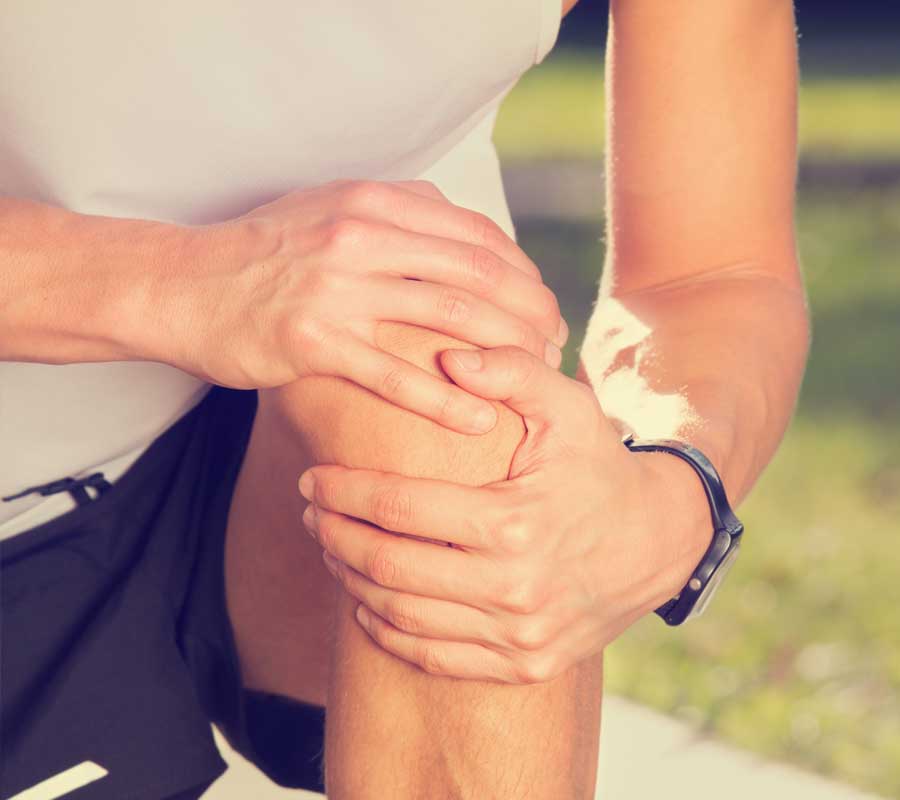
WHAT ARE SOME OF THE COMMON TYPES OF KNEE INJURIES?
The following are common types of knee injuries that the chiropractors at Broadway AT Yew Chiropractic & Massage see frequently:
ACL Injury
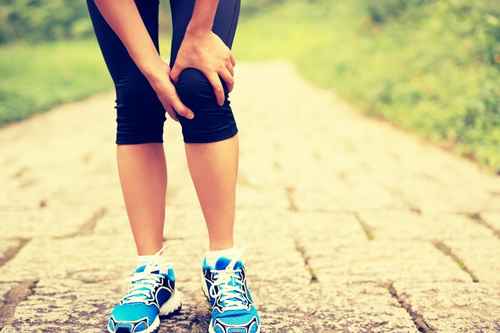
This injury involves a tear to the ACL (anterior cruciate ligament). The ACL is one of four ligaments that connect the shinbone to the thighbone. People who play sports are particularly at risk of suffering an ACL injury.
Torn Meniscus
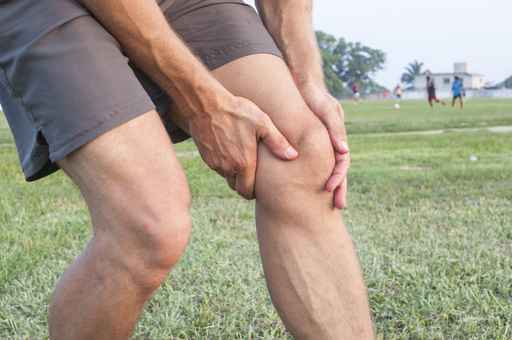
The meniscus is a piece of cartilage that acts as a shock absorber between the shinbone and thighbone. Anyone can suffer a torn meniscus simply by turning the knee the wrong way unexpectedly.
Bursitis
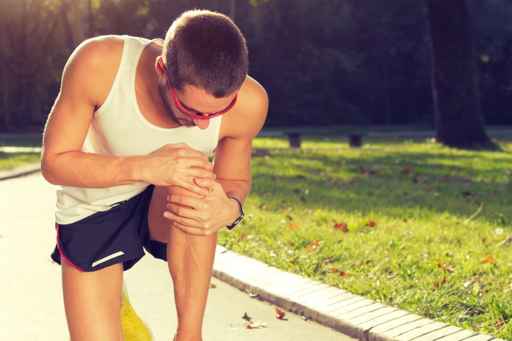
Bursitis is a condition that affects the small fluid sacs that cushion the outside of the knee joints. With bursitis, these sacs become inflamed and irritated, and can reduce the knee ability of the knee tendons and ligaments to glide smoothly as they should.
Patellar Tendonitis
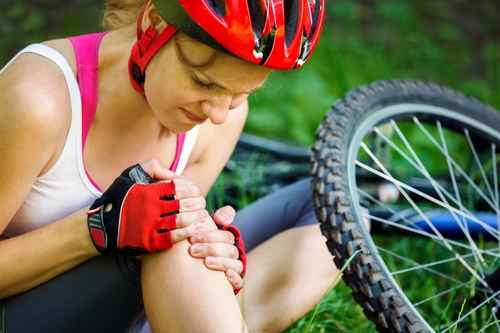
Tendonitis is condition where the tendons become inflamed. With Patellar Tendonitis, the tendons of the knee are affected. People who perform certain sports such as cycling and running are particularly at risk of developing Patellar Tendonitis. Our sports chiropractors treat these conditions quite often.
Mechanical Issues
The knees can suffer mechanical issues that can lead to pain and inflammation. These issues include the following:

Iliotibial Band Syndrome
The iliotibial band is a ligament that runs from the outside of the pelvic bone down the tibia. If this band becomes too tight, it can rub against the outside of the femur, which causes pain. Runners are particularly susceptible to this condition.
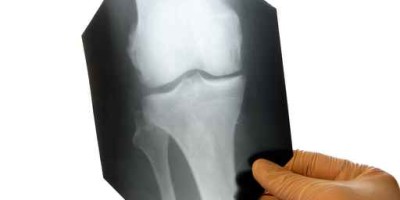
Loose Body Within the Knee Space
If an injury occurs, for example, a torn meniscus, pieces of the torn tissue can float freely within the knee space. If this tissue interferes with the normal movement of the knee joint, it can cause severe pain. And while pain not be constant, any time the loose tissue gets in the way of the other structures within the knee, the pain can return.
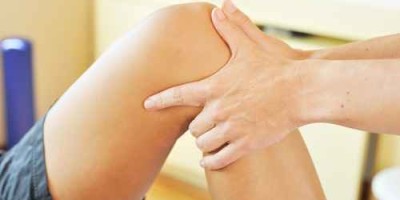
Plica (PLI-kah) syndrome
Plica syndrome is a result of a disturbance of the knee or various other pathological knee conditions. Healthy plica synovial membranes are pliable and thin. But, when the membranes become inflamed over a period, elasticity can be lost, and the membranes become thickened and fibrotic.
Diseases and Conditions That Cause Knee Pain
There are many diseases and conditions that can contribute to knee pain. These include:
Am I at Risk of Knee Pain?
If you suffer from a pre-existing condition such as arthritis, your knees can be affected. As well, if you participate in certain sports or activities that are commonly associated with knee pain (ie. running), you are at risk. And finally, if you are obese, too much pressure can be placed on the knees, leading to pain and inflammation.
How Can I Avoid Knee Pain?
There are steps you can take to cut your risk of knee pain. Basic things like maintaining a healthy weight, eating a nutritious and well balanced diet, and getting regular exercise can help keep your entire body in good shape, which will lower your risk of suffering a knee injury or developing other conditions that can contribute to knee pain.
How is Knee Pain Diagnosed?
If your knee pain is minor and only present once in a while, your doctor will most likely be able to make a diagnosis just based on how you describe your symptoms.
For more severe or constant types of knee pain, a variety of tests can be performed to diagnose the root cause. These include X-rays, MRI, Ultrasound, and Arthroscopic Surgery.
What Treatments Are Available for Knee Pain?
Depending on the root cause of your knee pain, there are many treatment options available.
At Home Treatment
To treat knee pain at home, practice the RICE technique (Rest, Ice, Compression and Elevation). If your knee is aching, lie down with your knee propped up on a pillow, and place an icepack over the area of pain. This will help to reduce pain and inflammation and can be done several times each day, as necessary.
Medications
Both prescription and over the counter medications can be helpful in treating knee pain. A pain reliever such as Tylenol, and an anti-inflammatory such as Advil can work well together to reduce your symptoms. Be sure to check with your doctor before taking any medications.
Chiropractic and Massage Therapy For Knee Pain
Many of the conditions that cause knee pain can be easily managed by proper assessment, exercise, rest, icing. With Chiropractic treatment and Laser Therapy, the symptoms can be greatly reduced by reducing inflammation of the knee joint and surrounding muscles.
At Broadway AT Yew Chiropractic and Massage, we use a combination of adjustment, laser therapy, rehabilitation and trigger point therapy to help ensure that the knee joints and muscles are working as optimally as possible under the circumstances.
As well, massage of the hips, thighs and calves can provide relief of the muscle soreness that often accompanies knee pain.
Physical Therapy and Exercise
Strength, endurance and stability exercises can be helpful in reducing the symptoms of knee pain.
Avoiding Triggers
Until your knee pain has been diagnosed and a treatment plan put in place, it’s best to avoid the activities that trigger knee pain. If you are someone who normally jogs or cycles, try a different form of exercise, such as swimming, to cut down on the direct force your knees experience. You’ll still get the benefits of aerobic exercise and cardio, but will not further injure or exacerbate your knee pain symptoms.
Summary
Knee pain is a common condition suffered by many. There are many causes and many treatment options available. If you prefer a natural drug-free treatment plan, the chiropractors at Broadway AT Yew Chiropractic & Massage can help!

